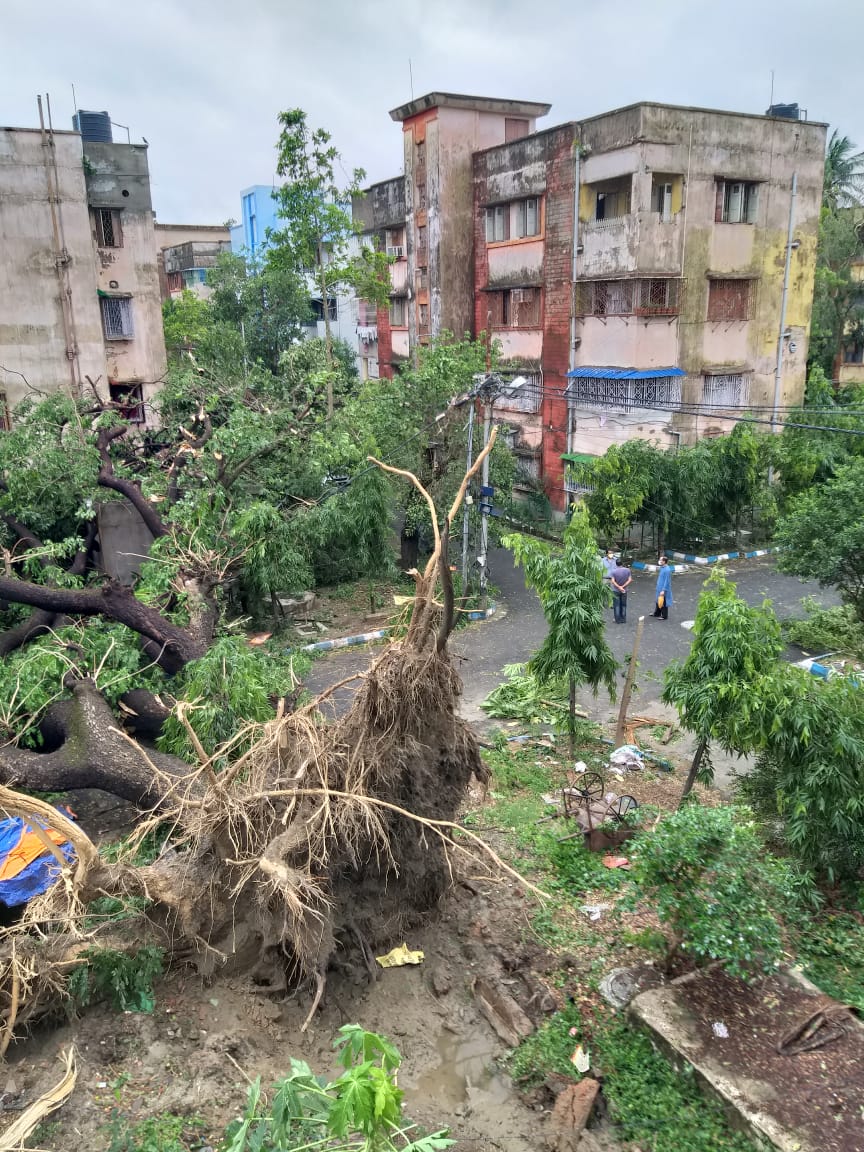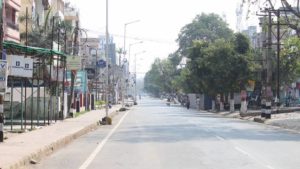Killing at least 12 people and causing damage that will go into billions of dollars when added up, Cyclone Amphan barrelled through the southern districts of West Bengal on the evening of May 20 before calming down and moving into Bangladesh.
About to turn into “depression” from a cyclone, Amphan was still dumping copious amounts of rain in Bangladesh, and is expected to do the same in north-eastern India, according to the India Meteorological Department (IMD) on the morning of May 21.
But before that, the strongest cyclone since 1982 – when the meteorologists started keeping regular records – decimated the coastal regions around the mouths of the Ganga and crippled Kolkata, , the capital of the Indian state of West Bengal. Despite making landfall during low tide, Amphan led to waves 3-4 metres higher than usual, moving up the myriad rivers and creeks that criss-cross the coast.
Going by IMD forecasts, salt water may have inundated large parts of Bhangar-1 block in the South 24 Parganas district of West Bengal. But there was no confirmation from the ground until this morning, as almost all mobile towers and electricity poles had been flattened by the wind that came in at a speed of 155-165 kilometres per hour (kmph).
The authorities had moved over 200,000 people from the coast into shelters before the cyclone reached the coast. That however, created a complication, because these shelters were already being used as Covid-19 quarantine centres, and now people are squashed in them without any prospect of keeping enough distance to avoid infection, though all have been given masks and asked to wear them at all times.
See: ‘Extremely severe’ Cyclone Amphan enters West Bengal
That speed went down to around 130 kmph by the time Amphan reached Kolkata, 100 kilometres inland, but was still strong enough to destroy thousands of uncemented buildings, uproot thousands of trees, turn all roads into raging torrents and short-circuit transformers all over the metropolis though the authorities had switched off power. Just about every Kolkata resident – including those living in upper floors – spoke of rainwater barrelling in as the wind exposed every possible crevice, and rooms getting flooded. Almost every resident also spoke of broken windows. There was serious damage to penthouses in some high-rise condominiums, said residents.

Fearful residents crowded at windows to watch the devastation outside, and many shot video clips of transformers catching fire as the wind forced short circuits. In one eastern neighbourhood, residents said their parked cars had been shifted by the ferocity of the wind till they went and banged against the car next in line.
It was far worse out in the open and nearer to the coast. All the way from West Bengal to Odisha to Andhra Pradesh along India’s East Coast Highway, there were large container trucks lying on their sides, flipped over by the wind.
With hardly any information coming out of the Sundarbans, West Bengal Chief Minister Mamata Banerjee spoke late on Wednesday evening of two districts being destroyed completely – North and South 24 Parganas. The Sundarbans – the world’s largest mangrove forest – is in South 24 Parganas district.
Latest update 13:30, 21 May 2020
The West Bengal Forest Department, has been able to report from the Sundarbans, with the following information: “All staff safe in Sundarbans. Water entered many camps. Villages around Kultali, Maipit, Patharpratima, Bhagabatpur, Kakdwip, Sagar, Jhila in bad shape. Gosaba embankment breached. We will get more news in morning. Most mobile networks down in area.”
There was one bit of good news. In the Jharkhali deer camp: one fawn was born.
![<p>A man is seen looking up at the sky from his doorway before the hit of the Cyclone Amphan.Super Cyclone Amphan hits West Bengal with a speed of 130 kmph on the afternoon of 20th May [image: Alamy]</p>](https://dialogue.earth/content/uploads/2020/05/Cyclone-Amphan-scaled.jpg)








![Indians wearing protective masks stand with their luggage in queue outside a railway station [image: Alamy]](https://dialogue.earth/content/uploads/2020/05/indians-protective-masks-300x200.jpg)